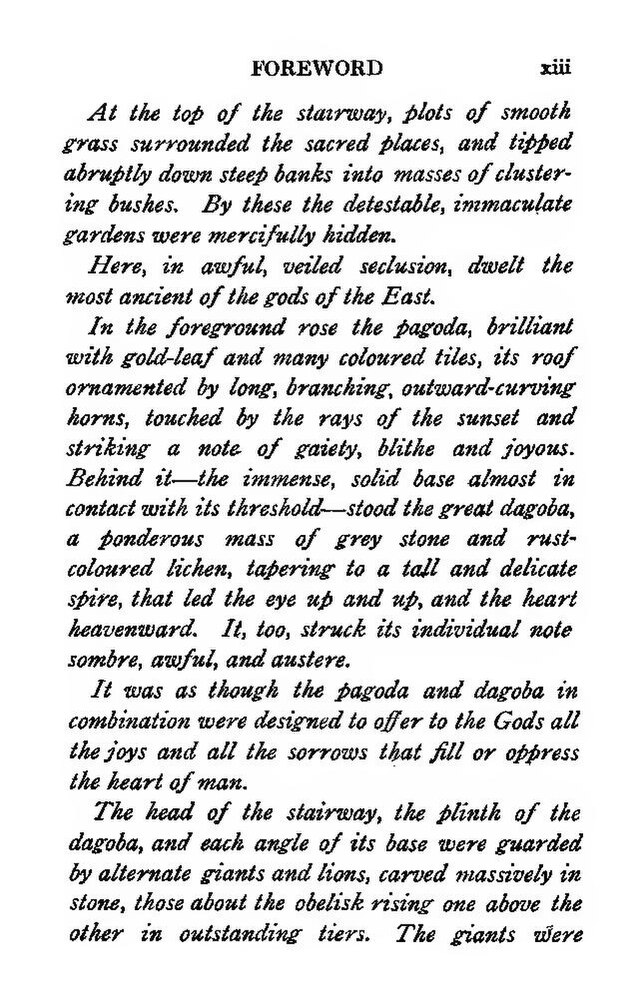At the top of the stairway, plots of smooth grass surrounded the sacred places, and tipped abruptly down steep banks into masses of clustering bushes. By these the detestable, immaculate gardens were mercifully hidden.
Here, in awful, veiled seclusion, dwelt the most ancient of the gods of the East.
In the foreground rose the pagoda, brilliant with gold-leaf and many coloured tiles, its roof ornamented by long, branching, outward-curving horns, touched by the rays of the sunset and striking a note of gaiety, blithe and joyous. Behind it—the immense, solid base almost in contact with its threshold—stood the great dagoba, a ponderous mass of grey stone and rust-coloured lichen, tapering to a tall and delicate spire, that led the eye up and up, and the heart heavenward. It, too, struck its individual note sombre, awful, and austere.
It was as though the pagoda and dagoba in combination were designed to offer to the Gods all the joys and all the sorrows that fill or oppress the heart of man.
The head of the stairway, the plinth of the dagoba, and each angle of its base were guarded by alternate giants and lions, carved massively in stone, those about the obelisk rising one above the other in outstanding tiers. The giants were